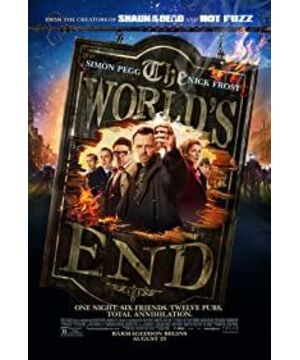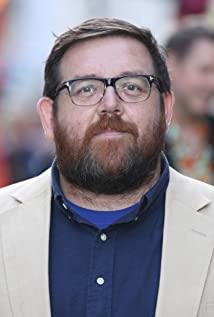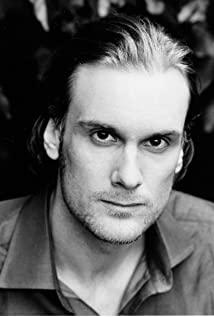If we place high hopes on film/image as the most favorable form of expression in the new media age, expecting it to provide a means of expression and transcendence of everyday experience, then we also have reason to worry about how film/image thinks/reflexes to us. Thinking, expressing and self-expression have a "counter-action": the perfect and sophisticated film draws precisely the boundaries of thinking and expression, plunging us into another experience that mirrors our everyday experience. In a sense, this is analogous to the dichotomous opposition of film researchers and philosophers, that the commerciality of film eats away at the fragile artistic composition of film. The assembly-line Hollywood movies provide an example of this. In fact, the thinking on the above issues is not limited to the criticism of Hollywood-style commercial films, nor is it only based on the opposition of the dual attributes of films. Old-fashioned theoretical resources and discourse paradigms always have a bad intention of domestication, moving from one stereotype to another.
It is necessary for us to advance our thinking on the above issues to such a point that the film/image as a device does not carry the projection of our desires, on the contrary, it is more dynamic and aggressive - it constructs our desires. In this sense, the bizarre incidents and bloody crimes in the calm town in "Blood Detective" can not only be regarded as the realm of Detective Angel's psychotic illusions, but also the spirit that the movie generally arouses among the audience. Fantasies. In this way, film/image is a device that creates and achieves each other with the audience, a dynamic structure that constantly creates and disintegrates. Rather, cinema is in this sense a powerful expression to rescue us from the quagmire of everyday experience.
The problem is that this fluid, dynamic process of interaction tends to be fixed by the elaborate, perfect, and stylized film. Movies are mass-produced, never-fading cellophane flowers, elaborately arranged mannequins in department store windows. We start to miss the jagged edges, shaky camera movements, and fragmented camera expressions of the film's frizz. For the fine film has contradictory upper and lower bounds: on the one hand it closes the possibility of expression and thinking with its perfect form and content, on the other hand its perfection and finesse reveal a great void and absence—that is, it speaks It's fine, and at the same time it doesn't say anything.
The three films of "Shaun of Zombies" have their innovations in at least two aspects: First, they tell the audience how to find "fun" and "meaning" in ordinary and boring daily life (the three films are suddenly exposed to the daily reality experience Zombies and the end of the world, bloody crime and small-town underworld, alien invasion and the end of the world, despite the carnival comedy content, the grafting of reality and psychotic fantasy offers the possibility of disintegrating reality and transcending everyday experience. ——This is the joy of the new era, the meaning of the new era); the second is to tell us that the perfect movie may express (more importantly, present) its boundaries by breaking through the limitations of its own perfection.
About these two points, Frederick Jameson expresses in "Historicism in The Shining", which we can mark as the boundary between experiential content and experiential form. The boundaries of experiential content are often shown as "doing a little bit" or "doing nothing." We only need to compare Shaun with Zombies (World War Z, 2013), Detective with Elm Street, At World's End and Battle of Los Angeles. Know the boundaries of everyday life. "Making a Big Deal" or "Making Much Ado About Nothing" makes us think about the content of the film to a certain extent, focusing on the boundaries of reality. Therefore, the scene in "The Shining" where the child is stepping on a tricycle in the empty corridor of the hotel, because the director's low-position camera follows, has the effect of a formula car competition - to be precise, the child stepping on the car is represented in the way of a racing car. The car scene.
On the other hand, Sean's unsatisfactory career and emotional life in "Zombie Shaun", the perfect life in an ordinary town in "The Detective", and the expressions of nostalgia for old times and friendship in "The End of the World" are all pictures An experiential, complete picture that calls for flipping, defacement, and destruction—isn't that what we're looking for in a movie? Isn't this the kind of paranoid desire that the movie evokes in the process of watching it - something abnormal should happen to be normal, isn't it?
As for the limits of empirical form, Jameson's formulation focuses on the exposition of imitation. Collage/parody/parody is an incompetence. When the masters in the history of art have fully occupied all the key style nodes, for the backward artists (painters), the perfect technique and distinctive style have stifled the only creativity and imagination in advance. So, what is the path to transcendence or escape? Before answering this question, let's think about how a master like Picasso is excellent and great) not only because Picasso created these or those painting styles of Cubism (Analytical Cubism and Synthetic Cubism), but also because Picasso was introspective It clearly finds, marks and transcends the boundaries of his own style in Cubism - taking Cubism as an example, the greatness of Picasso is that he marked the ruptures and cracks in Cubism, and realized the sliding between Analytical Cubism and Synthetic Cubism.
It is in this sense that these three films have drawn the boundaries of current cinematic expression: the film has realized the jumping and sliding from one mode of expression to another ("Shaun of Zombies": A Disappointed Life - Salvation world; Detective: The Perfect Town - crime shady; World's End nostalgic for old times and friendships - alien invasion), while outlining the boundaries of these modes themselves and the ruptures between them, the modes It is impossible to express how.
Of course, the other side of these three films is a short-circuit connection: a connection in another sense is achieved while short-circuiting. Such films are bound to become a typified or modeled expression, which needs to be surpassed at the same time of transcendence. This is an afterthought, and it is inevitable.
View more about The World's End reviews










